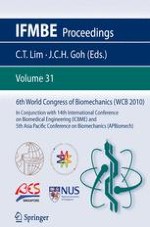2010 | OriginalPaper | Buchkapitel
Measuring Mouse Abdominal Aorta Dimensions in Vivo: A Comparison between (3D) Ultrasound and Micro-CT
verfasst von : B. Trachet, P. Segers, F. Claes, A. Berges
Erschienen in: 6th World Congress of Biomechanics (WCB 2010). August 1-6, 2010 Singapore
Verlag: Springer Berlin Heidelberg
Aktivieren Sie unsere intelligente Suche, um passende Fachinhalte oder Patente zu finden.
Wählen Sie Textabschnitte aus um mit Künstlicher Intelligenz passenden Patente zu finden. powered by
Markieren Sie Textabschnitte, um KI-gestützt weitere passende Inhalte zu finden. powered by
Mouse models are very useful to study the origin and progression of cardiovascular disease. An important component for a successful long-term study is the possibility of in vivo follow-up of cardiovascular structures. Recently, several imaging techniques already used in humans have become available for small animal research, namely the introduction of high-frequency ultrasound (US) technology and specific contrast agents for micro-CT CT). The goal of this study was to investigate to what extent these novel in vivo small animal imaging techniques yield similar results. We have determined in vivo diameters of the abdominal aorta (AA) of 9 mice at 4 consecutive time points (after 0, 8, 12 and 19 days) using 3 different in vivo methods: in vivo
μ
-CT, 3D US and M-mode US. Each AA was subdivided into 3 well-defined zones: a proximal, mid and distal AA zone. We used univariate ANOVA analysis and paired t-tests to analyze our data. Our results show that all AA diameters significantly increased over time (p < 0.05), independently of the applied imaging technique. This was in line with expectations and according to the body weight pattern of the mice. When pooling all data,
μ
-CT data correlated best with 3D US (r=0.67), followed by M-mode US vs. 3D US (r=0.60) and M-mode US vs
μ
-CT (r=0.46). When analyzing the data according to AA zone, all imaging modalities showed a significant decrease in aortic diameter (p<0.01) as the aorta tapers from the proximal zone to the mid and the distal zone. There was no significant difference between the different imaging techniques in the proximal zone, but diameters obtained by CT were significantly lower in the mid and distal zones (p<0.05). In conclusion, both
μ
-CT and ultrasound (both M-mode and 3D) are comparable methods to determine aortic dimensions in vivo. However, discrepancies between diameters still exist and should be kept in mind during in vivo measurements.
